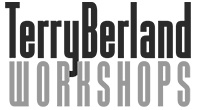Written for Casting Networks News by Terry Berland @berlandcasting.
Recently I posted on social media that I was casting a package of voice over spots with many roles and was in the midst of reviewing almost a thousand submissions. If this was for an on camera commercial spot with many roles, I could easily receive over four thousand submissions. Someone responded with an interesting comment, asking:
“Why do you review so many options when I’m sure you get what you need in the first fifty, and certainly you have more than enough options after reviewing one hundred.”
I probably can have it cast after viewing the first one hundred—but that’s not how it works. I gave the question more thought and wanted to share why the casting process involves more than a quick “slam dunk”.
Casting Is Part Of A System
Whether I’m casting voiceover or on-camera roles, I see casting as part of a working ecosystem made up of actors, agents, and managers where everyone has the opportunity to grow and succeed.
Once a breakdown is released, as the casting director, I take on the responsibility of giving everyone a fair shot. We do that by reviewing all the submissions that come in. I’ve heard casting directors refer to the phase when submissions are pouring in, nothing is sorted yet, and the volume feels overwhelming, as “casting hell.”
But then we implement an organized process and at some point, as we work our way through, the task of choosing who to present to our client becomes manageable.
What Makes a Casting Director Tick
Casting directors are curious by nature. We’re not just looking for what works—we’re exploring who’s emerging and who brings a fresh or unexpected take. If I stopped after the first 100 submissions, I might miss a performance that offers something truly special to the role. Most importantly, I wouldn’t have given everyone who put time into their audition a fair chance.
The Drive to Discover
We review widely because we want to discover.
Sometimes it’s about giving an actor I’m not that familiar with a shot and certainly giving the agent the respect of viewing the talent they went to the trouble of presenting.
It’s More Than Filling a Role
Every audition is more than a submission; it’s a form of participation in the creative community. Each read is a chance for an actor to show their stuff, for an agent to advocate, and for a casting director to track talent. So yes, maybe I see what I need early on—but I keep going because I’m also looking for what I didn’t know I needed until I see it, and because everyone deserves a chance.
Building Relationships
Reviewing a wide range of talent, even if they don’t book the current role, keeps the casting office connected with actors. It builds goodwill and strengthens relationships that carry into future projects. In fact, in a project I worked on recently, there were several actors who weren’t quite right for one role, but they were good for another role and I requested them to read for the different role.
If you want to sharpen up on your commercial acting technique, follow this link to Terry Berland’s Commercial Acting workshop.









